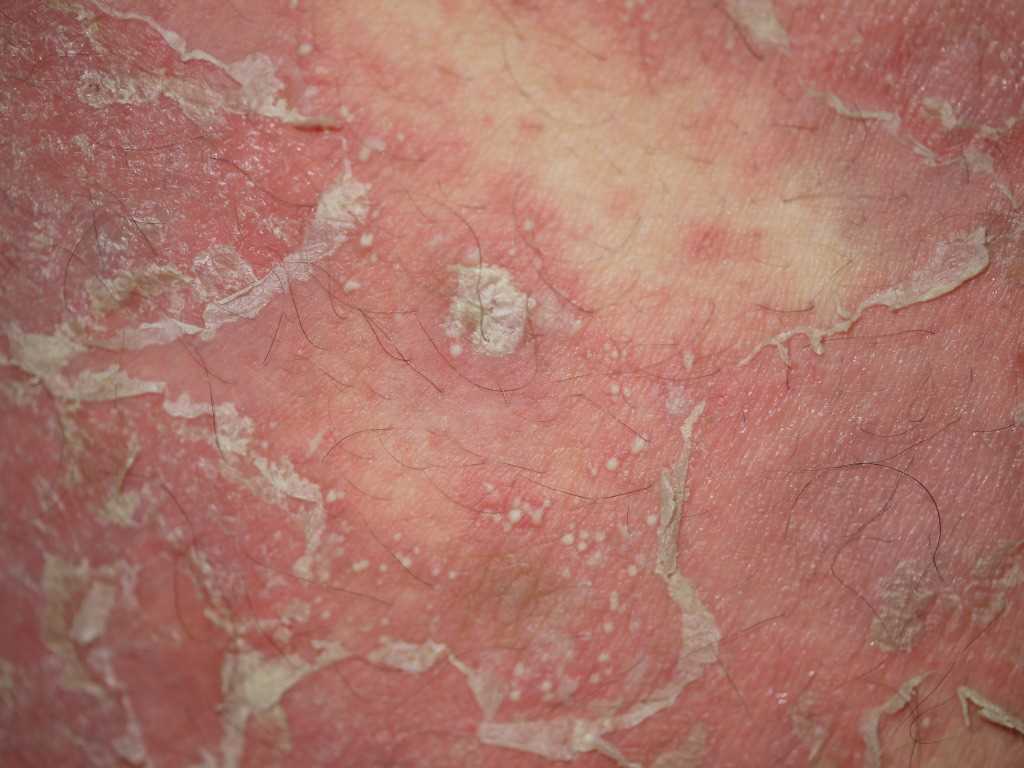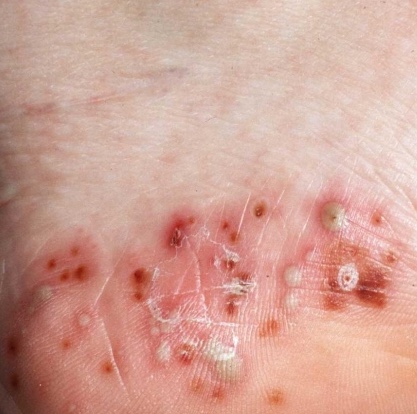[1]
Tsuchida Y, Hayashi R, Ansai O, Nakajima M, Oginezawa M, Kawai T, Yokoyama R, Deguchi T, Hama N, Shinkuma S, Abe R. Generalized pustular psoriasis complicated with bullous pemphigoid. International journal of dermatology. 2019 Mar:58(3):e66-e67. doi: 10.1111/ijd.14332. Epub 2018 Dec 5
[PubMed PMID: 30516289]
[2]
Negrotto L, Correale J. Palmar pustular psoriasis associated with teriflunomide treatment. Multiple sclerosis and related disorders. 2019 Jan:27():400-402. doi: 10.1016/j.msard.2018.11.020. Epub 2018 Nov 19
[PubMed PMID: 30513502]
[3]
Epple A, Paffhausen JE, Fink C, Enk A, Sedlaczek O, Haenssle HA. Chronic recurrent multifocal osteomyelitis with psoriatic skin manifestations in a 12-year-old female. Dermatology practical & conceptual. 2018 Oct:8(4):297-298. doi: 10.5826/dpc.0804a09. Epub 2018 Oct 31
[PubMed PMID: 30479859]
[4]
Madanagobalane S, Secukinumab in Generalized Pustular Psoriasis. Indian dermatology online journal. 2018 Nov-Dec
[PubMed PMID: 30505796]
[5]
Boehner A, Navarini AA, Eyerich K. Generalized pustular psoriasis - a model disease for specific targeted immunotherapy, systematic review. Experimental dermatology. 2018 Oct:27(10):1067-1077. doi: 10.1111/exd.13699. Epub 2018 Jul 20
[PubMed PMID: 29852521]
Level 1 (high-level) evidence
[6]
Komatsuda S, Kamata M, Chijiwa C, Namiki K, Fukaya S, Hayashi K, Fukuyasu A, Tanaka T, Ishikawa T, Ohnishi T, Abe K, Yamamoto T, Aozasa N, Sugiura K, Tada Y. Gastrointestinal bleeding with severe mucosal involvement in a patient with generalized pustular psoriasis without IL36RN mutation. The Journal of dermatology. 2019 Jan:46(1):73-75. doi: 10.1111/1346-8138.14711. Epub 2018 Nov 26
[PubMed PMID: 30474867]
[7]
Zhang Z, Xu JH. Investigation of Psoriasis Susceptibility Loci in Psoriatic Arthritis and a Generalized Pustular Psoriasis Cohort. The journal of investigative dermatology. Symposium proceedings. 2018 Dec:19(2):S83-S85. doi: 10.1016/j.jisp.2018.09.008. Epub
[PubMed PMID: 30471759]
[8]
Bachelez H, Choon SE, Marrakchi S, Burden AD, Tsai TF, Morita A, Turki H, Hall DB, Shear M, Baum P, Padula SJ, Thoma C. Inhibition of the Interleukin-36 Pathway for the Treatment of Generalized Pustular Psoriasis. The New England journal of medicine. 2019 Mar 7:380(10):981-983. doi: 10.1056/NEJMc1811317. Epub
[PubMed PMID: 30855749]
[9]
Gabeff R, Safar R, Leducq S, Maruani A, Sarrabay G, Touitou I, Samimi M. Successful therapy with secukinumab in a patient with generalized pustular psoriasis carrying homozygous IL36RN p.His32Arg mutation. International journal of dermatology. 2019 Jan:58(1):e16-e17. doi: 10.1111/ijd.14293. Epub 2018 Nov 14
[PubMed PMID: 30430544]
[10]
Su Z, Paulsboe S, Wetter J, Salte K, Kannan A, Mathew S, Horowitz A, Gerstein C, Namovic M, Todorović V, Seagal J, Edelmayer RM, Viner M, Rinaldi L, Zhou L, Leys L, Huang S, Wang L, Sadhukhan R, Honore P, McGaraughty S, Scott VE. IL-36 receptor antagonistic antibodies inhibit inflammatory responses in preclinical models of psoriasiform dermatitis. Experimental dermatology. 2019 Feb:28(2):113-120. doi: 10.1111/exd.13841. Epub 2018 Dec 21
[PubMed PMID: 30417427]
[11]
Meier-Schiesser B, Feldmeyer L, Jankovic D, Mellett M, Satoh TK, Yerly D, Navarini A, Abe R, Yawalkar N, Chung WH, French LE, Contassot E. Culprit Drugs Induce Specific IL-36 Overexpression in Acute Generalized Exanthematous Pustulosis. The Journal of investigative dermatology. 2019 Apr:139(4):848-858. doi: 10.1016/j.jid.2018.10.023. Epub 2018 Nov 2
[PubMed PMID: 30395846]
[12]
Li ZT, Wang S. [Genetic Polymorphism of IL36RN in Han Patients with Generalized Pustular Psoriasis Alone in Sichuan Region]. Sichuan da xue xue bao. Yi xue ban = Journal of Sichuan University. Medical science edition. 2018 Jul:49(4):582-586
[PubMed PMID: 30378314]
[13]
Okubo Y, Mabuchi T, Iwatsuki K, Elmaraghy H, Torisu-Itakura H, Morisaki Y, Nakajo K. Long-term efficacy and safety of ixekizumab in Japanese patients with erythrodermic or generalized pustular psoriasis: subgroup analyses of an open-label, phase 3 study (UNCOVER-J). Journal of the European Academy of Dermatology and Venereology : JEADV. 2019 Feb:33(2):325-332. doi: 10.1111/jdv.15287. Epub 2018 Nov 15
[PubMed PMID: 30317671]
[14]
Cro S, Smith C, Wilson R, Cornelius V. Treatment of pustular psoriasis with anakinra: a statistical analysis plan for stage 1 of an adaptive two-staged randomised placebo-controlled trial. Trials. 2018 Oct 3:19(1):534. doi: 10.1186/s13063-018-2914-y. Epub 2018 Oct 3
[PubMed PMID: 30285894]
Level 1 (high-level) evidence


